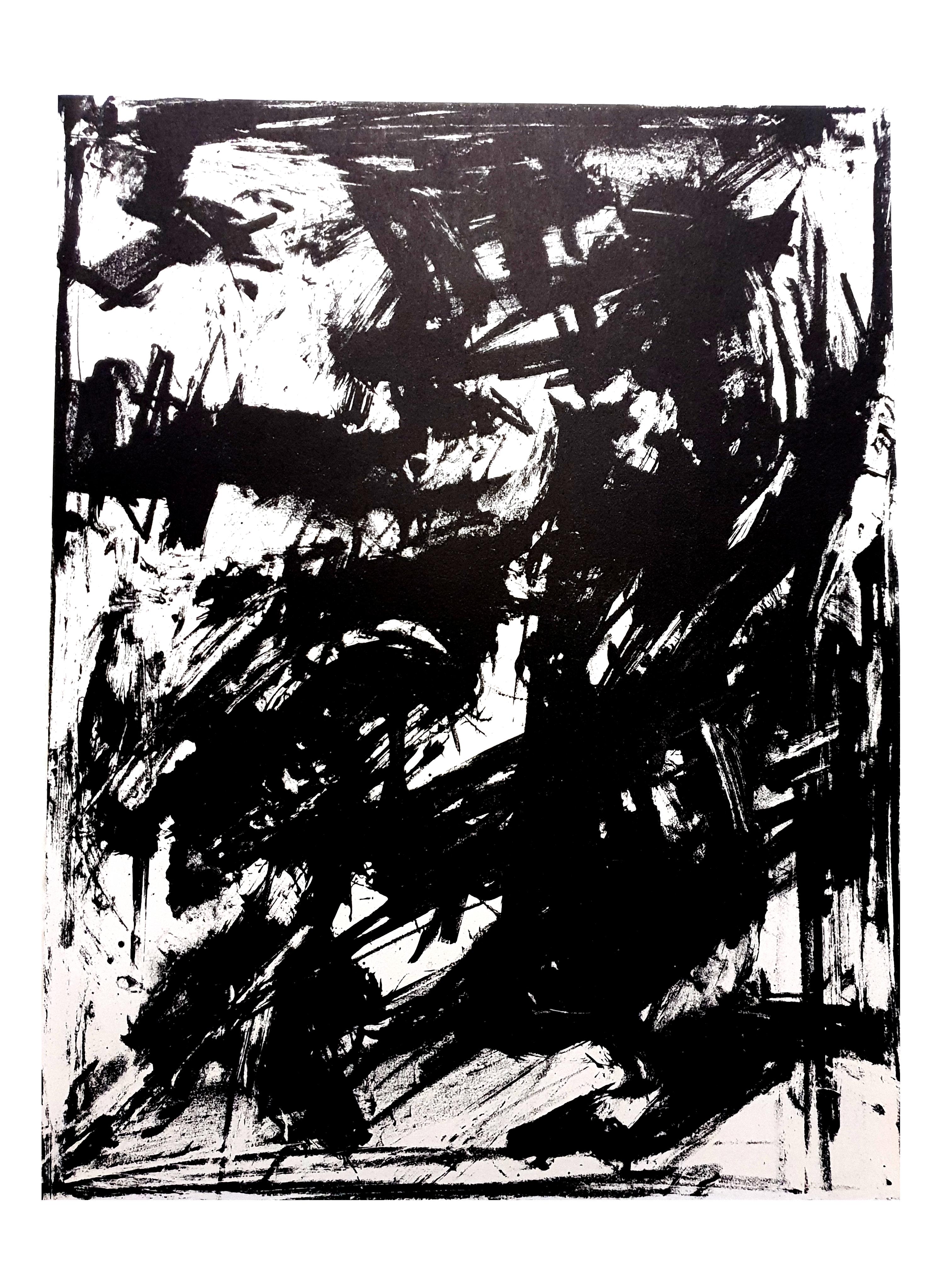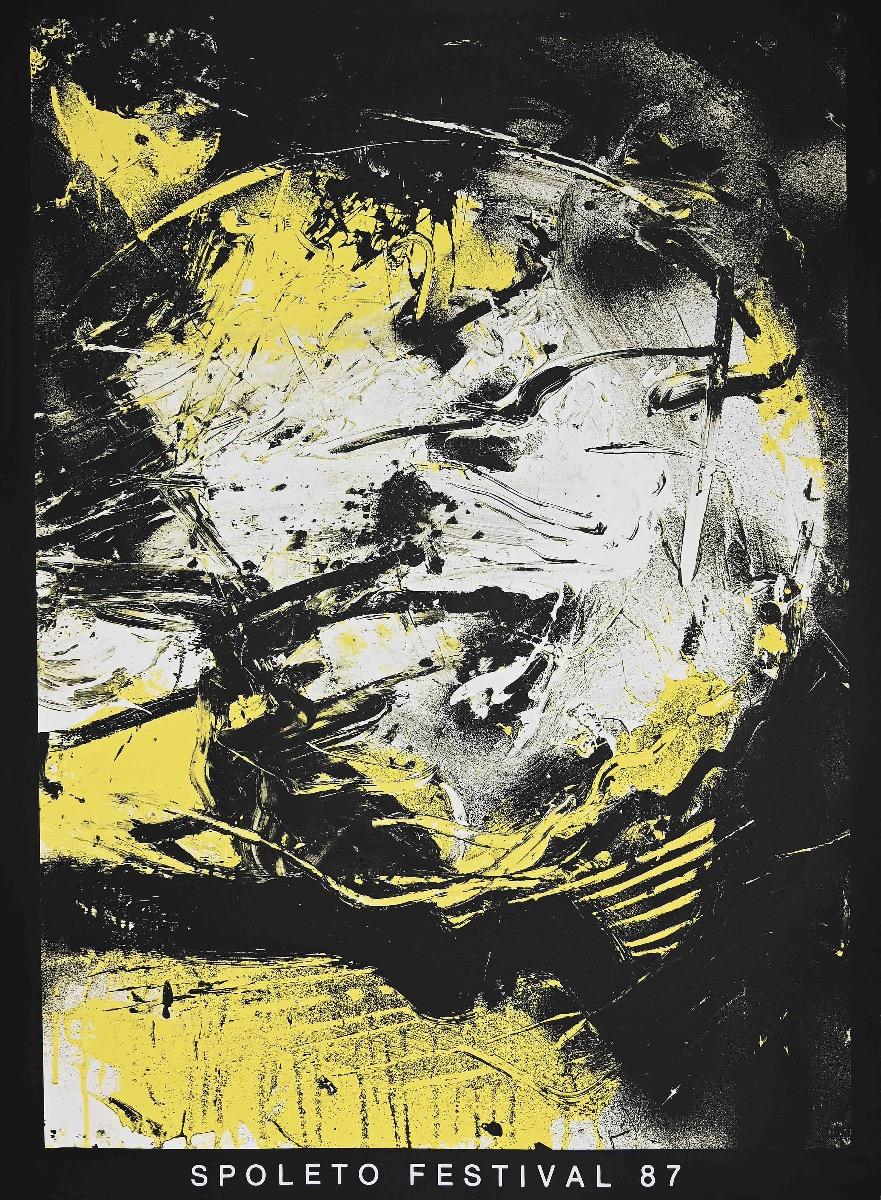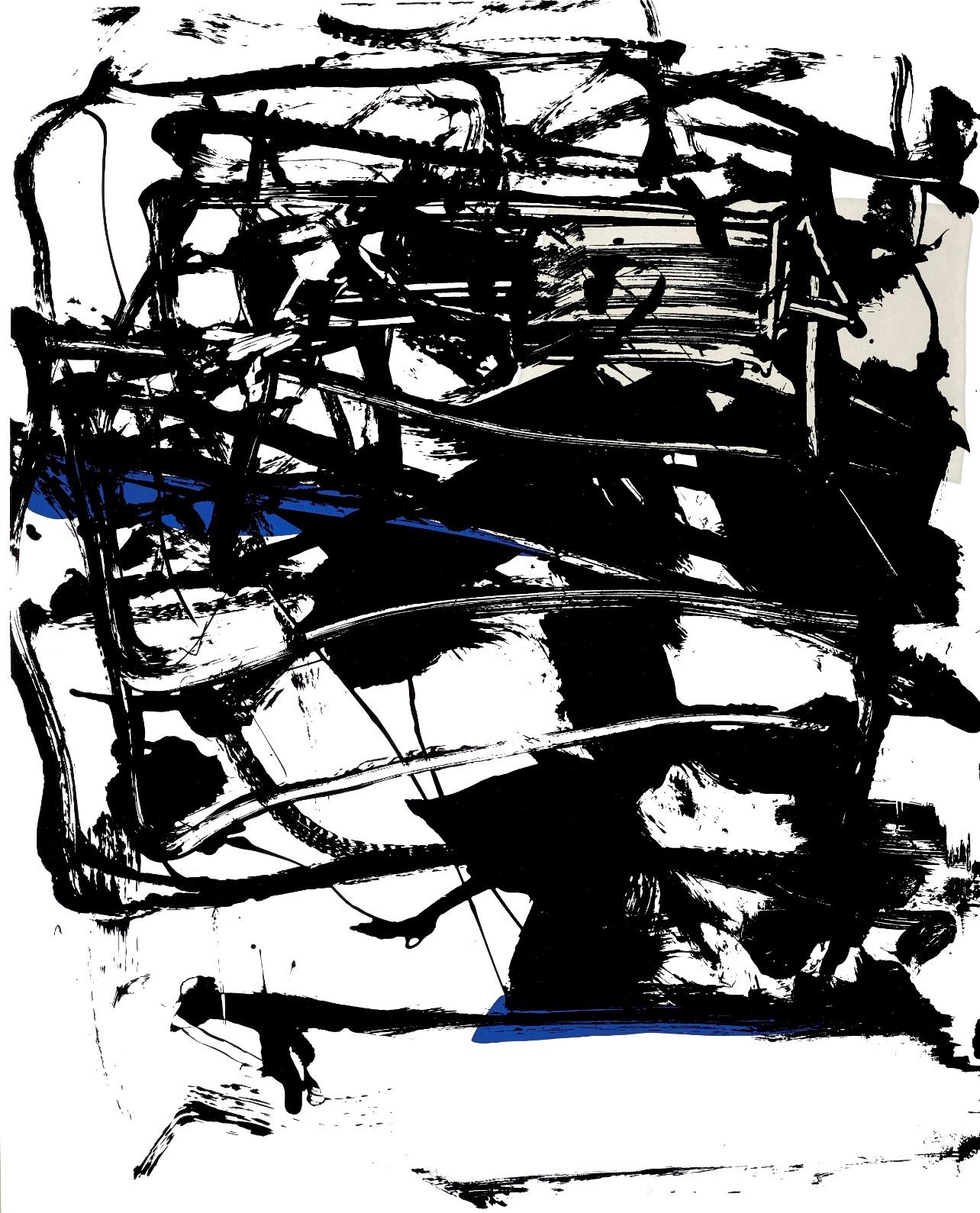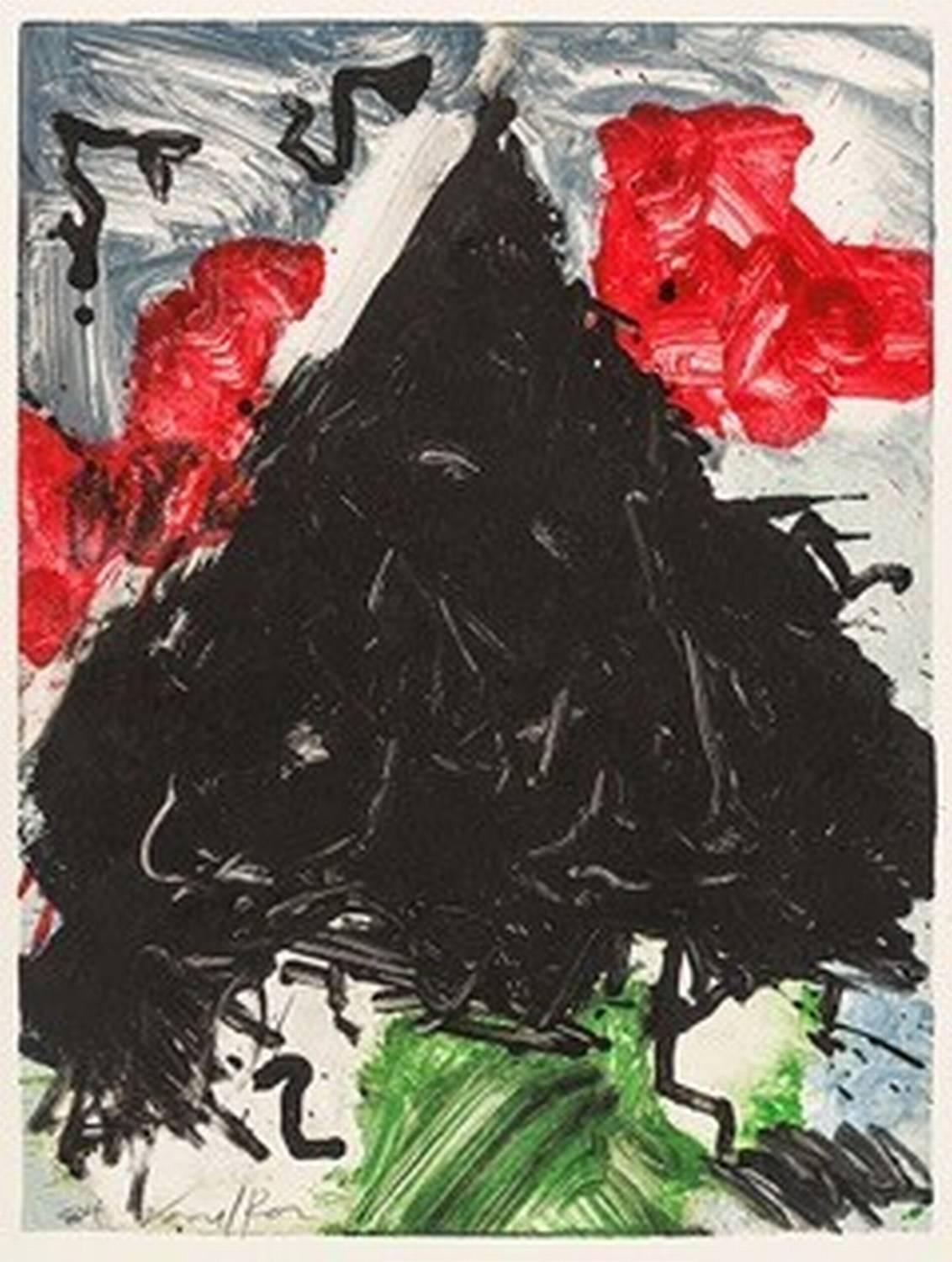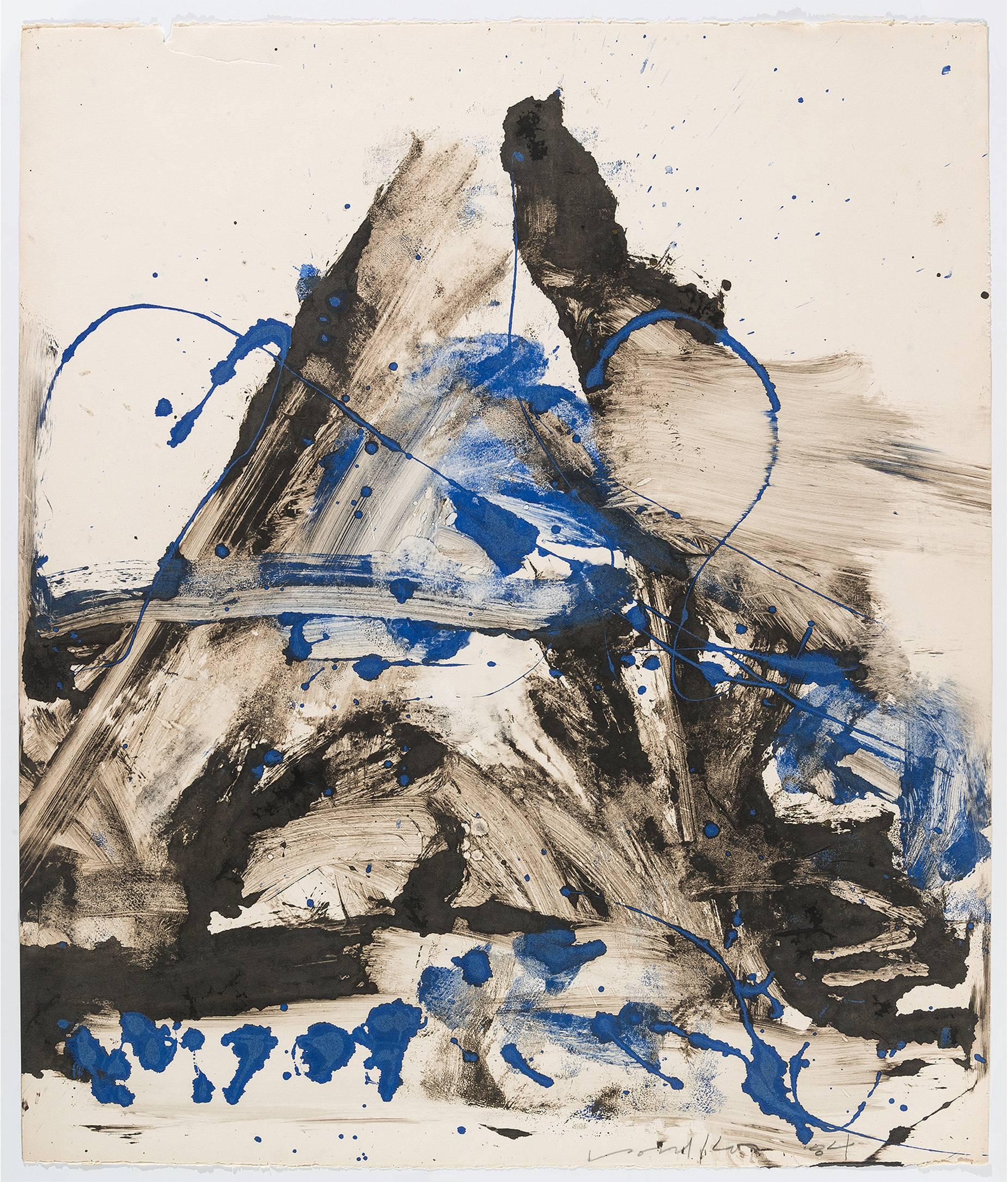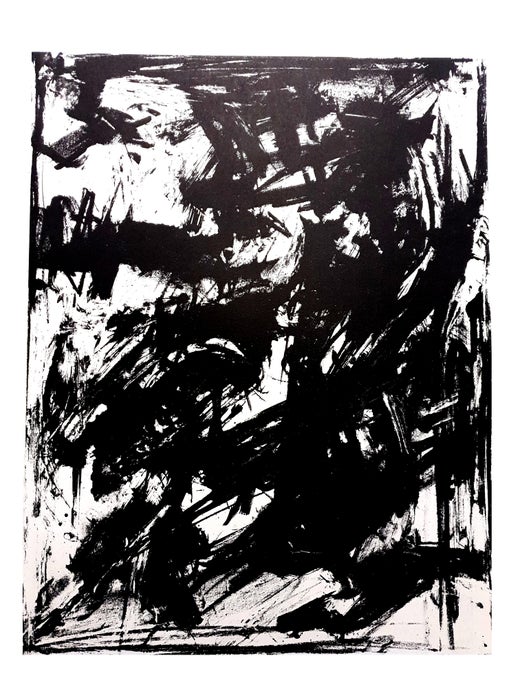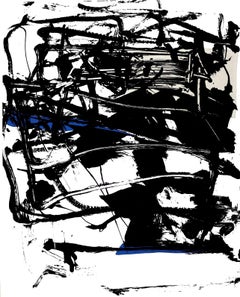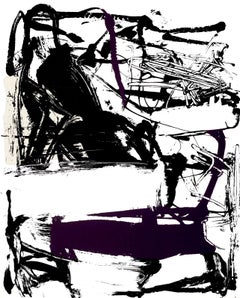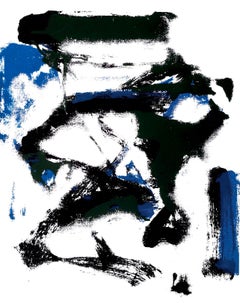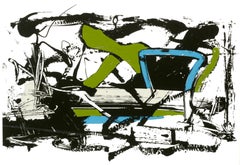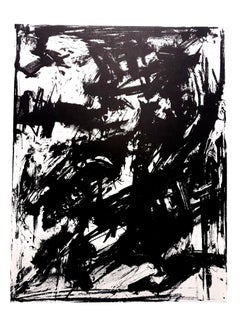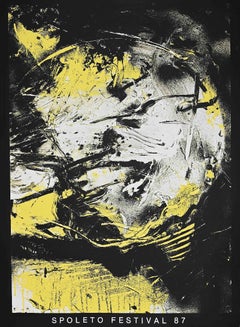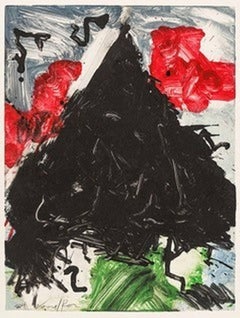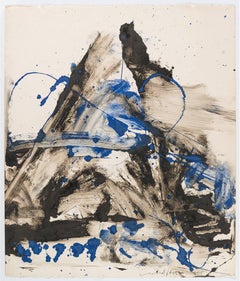Lithograph on vélin paper. Paper Size: 12.4 x 9.65 inches. Inscription: Unsigned and unnumbered, as issued. Notes: From the album, XXe siècle, Nouvelle série, XXIIe Année, N° 16, Mai 1961, Cahiers d'Art publiés sous la direction de Gualtieri di San Lazzaro, 1961. Published by Société Internationale d'Art XXe siècle, Paris, under the direction of Gualtieri di San Lazzaro, éditeur, Paris; printed by Mourlot Frères, Paris, 1961. Additional notes: Excerpted from the academic article, “Promoting Original Prints, The Role of Gualtieri di San Lazzaro and XXe Siècle” by Valerie Holman, published in Print Quarterly, XXXIII, 2016, 2, Until recently very little has been written on the Italian author and art publisher Gualtieri di San Lazzaro (1904-75), yet for 50 years he chronicled the life and work of contemporary artists, produced monographs of exceptional quality, and disseminated original prints by modern painters and sculptors through his best-known periodical, XXe Siècle. Although still a relatively unfamiliar figure in the United Kingdom, San Lazzaro is one of the half-dozen great art publishers of the mid-twentieth century who, together with his exemplar, Ambroise Vollard (1866-1939), and those of his own generation, Christian Zervos (1889-1970), Tériade (1889-1983) and Albert Skira (1904-73), chose to base himself in Paris, seeing it throughout his life as the centre of the art world….XXe Siècle, an illustrated periodical, was launched in 1938 and printed in editions of approximately 2,000, each issue containing both photographs and four-colour separation reproductions across a wide spectrum of visual imagery ranging from masterpieces of Western painting to popular prints from the Far East. Its large format, lively design, and close integration of text and image, were immediately striking, but its most innovative feature, introduced at the suggestion of Hans Arp (1886-1966), was the inclusion of original prints by contemporary artists in every issue. With obvious appeal for collectors, XXe Siècle was also designed to introduce a wider, international public to contemporary painting and sculpture through good quality colour reproductions and the immediacy of original prints. Comparable in price to Cahiers d'Art, early issues of XXe Siècle sold out rapidly. While San Lazzaro's own aesthetic preferences tended towards lyric abstraction, he made clear that XXe Siècle was non-partisan [publication ceased during World War II]….in 1951, San Lazzaro relaunched XXe Siècle with thematic issues that were materials based, or centred on a topic of current interest in the visual arts, particularly in Europe: concepts of space, matter, monochrome, mark-making and the sign.' A defining feature of the new series was Italy's artistic dialogue with France for, while San Laz-zaro had originally concentrated on Paris-based painters and sculptors, his aim was to create an international network, to make known the work of French artists in Italy and Italian artists in France, and subsequently extend this bilateral axis to the English-speak-ing world. The artists represented in No. I by an original print were all best known as sculptors: Arp, Laurens, Henry Moore (1898-186) and Marino Marini, San Lazzaro not only sought to show readers the full range of an artist's work, but to encourage the production of prints, a stimulus much appreciated, for example, by Magnelli…. Suffering from failing health, in 1968 San Lazzaro lost overall control of XXe Siècle to Léon Amiel, a printer-publisher who had provided financial backing and helped with distribution in America." Thematic issues now ceased and were replaced by a 'panorama' of the year, but San Lazzaro was still active as a publisher of books and albums of prints….Shortly after his death, San Lazzaro himself was the subject of two exhibitions: 'Omaggio a XXe Siècle' in Milan in December 1974 centred on graphic work by those artists closest to him late in life, while 'San Laz-zaro et ses Amis' at the Musée d'Art Moderne de la Ville de Paris in 1975 featured work by all those whose work he had promoted for more than 50 years: Arp, Calder (1898-1976), Capogrossi, Chagall, Sonia Delau-nay, Dubuffet, Estève, Lucio Fontana (1899-1968), Gili-oli (1911-77), Magnelli, Marini, Miró, Moore and Poliakoff. This exhibition was seen by one of his closest colleagues as an indirect portrait of San Lazzaro, a complex man whose modesty and reserve masked his unremitting drive to extend international appreciation of contemporary art, and to bring the reading public closer to its making through the medium of print.
EMILIO VEDOVA (1919-2006) was a modern Italian painter. He is considered one of the most important artists to emerge from Italy's artistic scene in the post-World War II. After an initial formative experience within Expressionism, he joined the group "Corrente" (1942–1943), during the second world war, which included other artists such as Renato Guttuso and Renato Birolli. He recorded his experience in his drawings. During this time he also participated in the Italian resistance movement. Vedova returned to Venice towards the end of the war and played a key role in the post-war Italian art movement, which was connecting to the European avant-garde. His work became much more abstract. His images represented the apprehension of the time, with his geometric shapes and color palette. In 1946 he co-signed the manifesto "Beyond Guernica" which included several Italian artists who were to become famous. In 1947 Vedova founded Fronte Nuovo delle Arti.
In 1951, Vedova exhibited his first solo show in the United States at the Catherine Viviano Gallery located in New York. This show was where he began to attract big name collectors, such as Peggy Guggenheim. In 1952 he became a member of the influential and more avant garde Gruppo degli Otto (Afro, Birolli, Corpora, Santomaso, Morlotti, Vedova, Moreni, and Turcato), organized by the critic Lionello Venturi, which exhibited at the Venice Biennial. This show is known to have begun the art movement recognized as Arte Informale. His work exerted a significant influence on the Arte Povera group. He later established a fruitful cooperation with composer Luigi Nono, designing sets and costumes for the opera Intolleranza 1960. In 1984 he designed a highly original light setting for Nono's opera Prometeo at La Fenice. Nono dedicated his first work for magnetic tape Omaggio a Emilio Vedova (1960) to Vedova. Vedova had a number of gallery and museum exhibitions, at places like the Galleria Nazionale d'Arte Moderna in Rome and the Peggy Guggenheim Collection in Venice. Vedova spent most of his life in Venice, where he taught at the Accademia di Belle Arti. On May 30, 2017 Emilio Vedova's painting, Tensione sold for $918,308 USD at Dorotheum, setting a world record for the artist.
